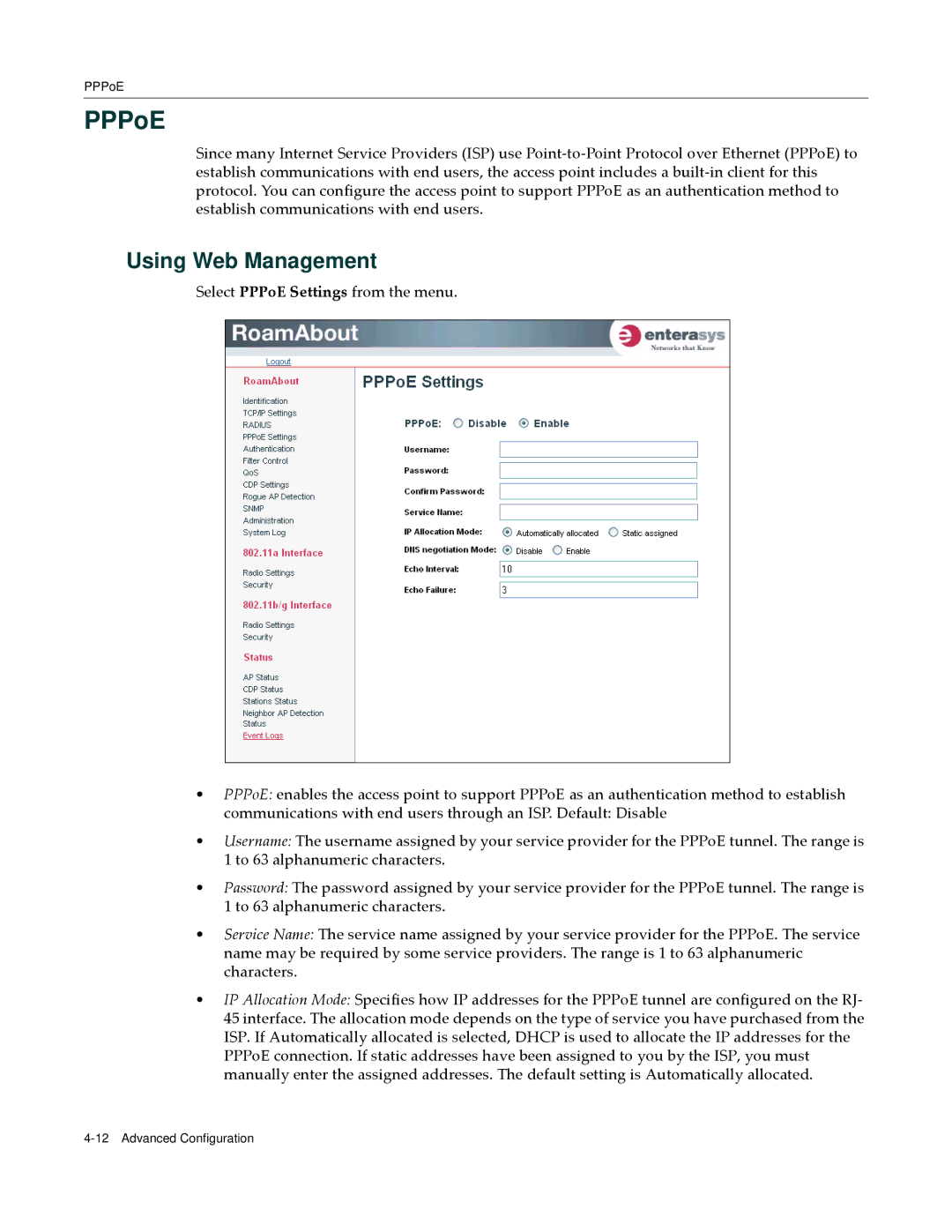
PPPoE
PPPoE
Since many Internet Service Providers (ISP) use Point‐to‐Point Protocol over Ethernet (PPPoE) to establish communications with end users, the access point includes a built‐in client for this protocol. You can configure the access point to support PPPoE as an authentication method to establish communications with end users.
Using Web Management
Select PPPoE Settings from the menu.
•PPPoE: enables the access point to support PPPoE as an authentication method to establish
communications with end users through an ISP. Default: Disable
•Username: The username assigned by your service provider for the PPPoE tunnel. The range is
1to 63 alphanumeric characters.
•Password: The password assigned by your service provider for the PPPoE tunnel. The range is
1to 63 alphanumeric characters.
•Service Name: The service name assigned by your service provider for the PPPoE. The service name may be required by some service providers. The range is 1 to 63 alphanumeric characters.
•IP Allocation Mode: Specifies how IP addresses for the PPPoE tunnel are configured on the RJ‐
45interface. The allocation mode depends on the type of service you have purchased from the ISP. If Automatically allocated is selected, DHCP is used to allocate the IP addresses for the PPPoE connection. If static addresses have been assigned to you by the ISP, you must manually enter the assigned addresses. The default setting is Automatically allocated.
